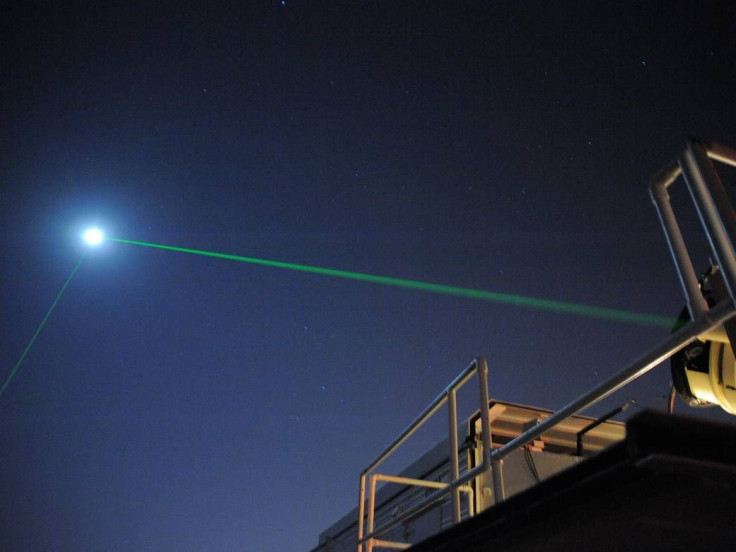Scientists Successfully Launch Laser Beam To Lunar Reconnaissance Orbiter For The First Time

KEY POINTS
- Scientists report the first successful laser ranging from Earth to the reflector on the LRO
- It is a harder feat than ranging the reflectors on the surface of the moon
- Future laser ranging on the LRO could yield valuable scientific knowledge
Scientists announced that they received a signal back from a reflector on the moon spacecraft, Lunar Reconnaissance Orbiter, for the first time after a decade of attempts.
There are five reflecting panels on the moon, three of which were brought by Apollo 11, 14 and 15 crews, while the other two were taken to the moon by Soviet robotic rovers called Lonokhod 1 and 2. These laser retro-reflector arrays (LRA) are said to be the last working science experiments from the Apollo era and, for the last 50 years, scientists have been collecting data using these panels by aiming a beam of light at them and counting the amount of time before the light comes back.
These experiments are said to have led to major discoveries but, they have become harder to use as they've been returning weaker signals, possibly because of lunar dust that had settled on the LRAs' surface, blocking the light from reaching the mirrors or overheating them so that they work less efficiently.
Today, there is another retro-reflector array that scientists can target and it is aboard the Lunar Reconnaissance Orbiter (LRO), which has been orbiting the moon since 2009. NASA scientists who authored a new study say there have been several previous efforts to reach the LRO's LRA from Apache Point Station but they were unsuccessful for several reasons, including weather.
This is also because trying to reach the LRO's reflector is an even more difficult task than reaching the surface reflectors. The LRO's LRA is only a tenth of the size of the earlier panels on the moon and it is attached to a fast-moving target.
In a new study, NASA scientists and their French colleagues report the first successful two-way laser ranging from the Lunar Laser Ranging station in Grasse, France, to the LRO's LRA.
"Grasse measured 67 returns in two 6-min sessions on September 4, 2018," the researchers wrote. "Clear returns were also recorded during two additional sessions on August 23 – 24, 2019 for which active slewing by LRO was performed to bring the array in view of the station."
Although the experiment does not yet answer the "dust question," the success marks a significant step in collecting more data. The researchers' success also has implications for future studies that could lead to major discoveries. For instance, it was through experiments using the earlier panels that led to the revelation that the Earth and moon are slowly moving away from each other at a rate of 3.8 centimeters per year.
For now, while the researchers are still refining their techniques, other scientists will continue to use the earlier panels even with the weaker signals.
"The current observations have given us good knowledge of the conditions to perform successful two-way laser ranging to LRO's LRA," the researchers wrote. "This will help us prepare for a number of new attempts. As we accumulate returns in different geometry and configurations, but mostly improve the statistics with more passes, we will be able to perform a detailed quantitative study to ascertain the possible degradation of the surface LRA due to dust deposition."
The study is published in the journal Earth, Planets and Space.
© Copyright IBTimes 2025. All rights reserved.






















